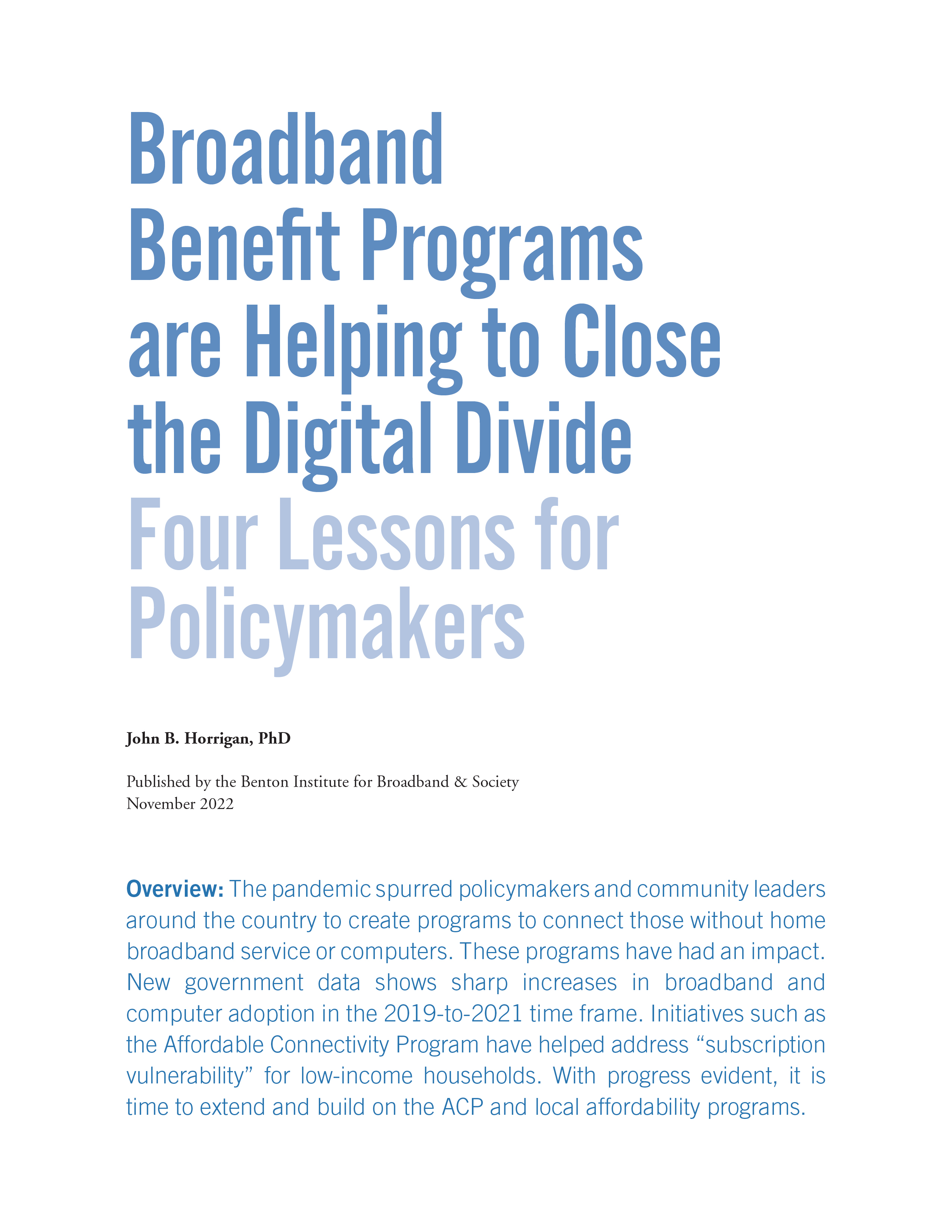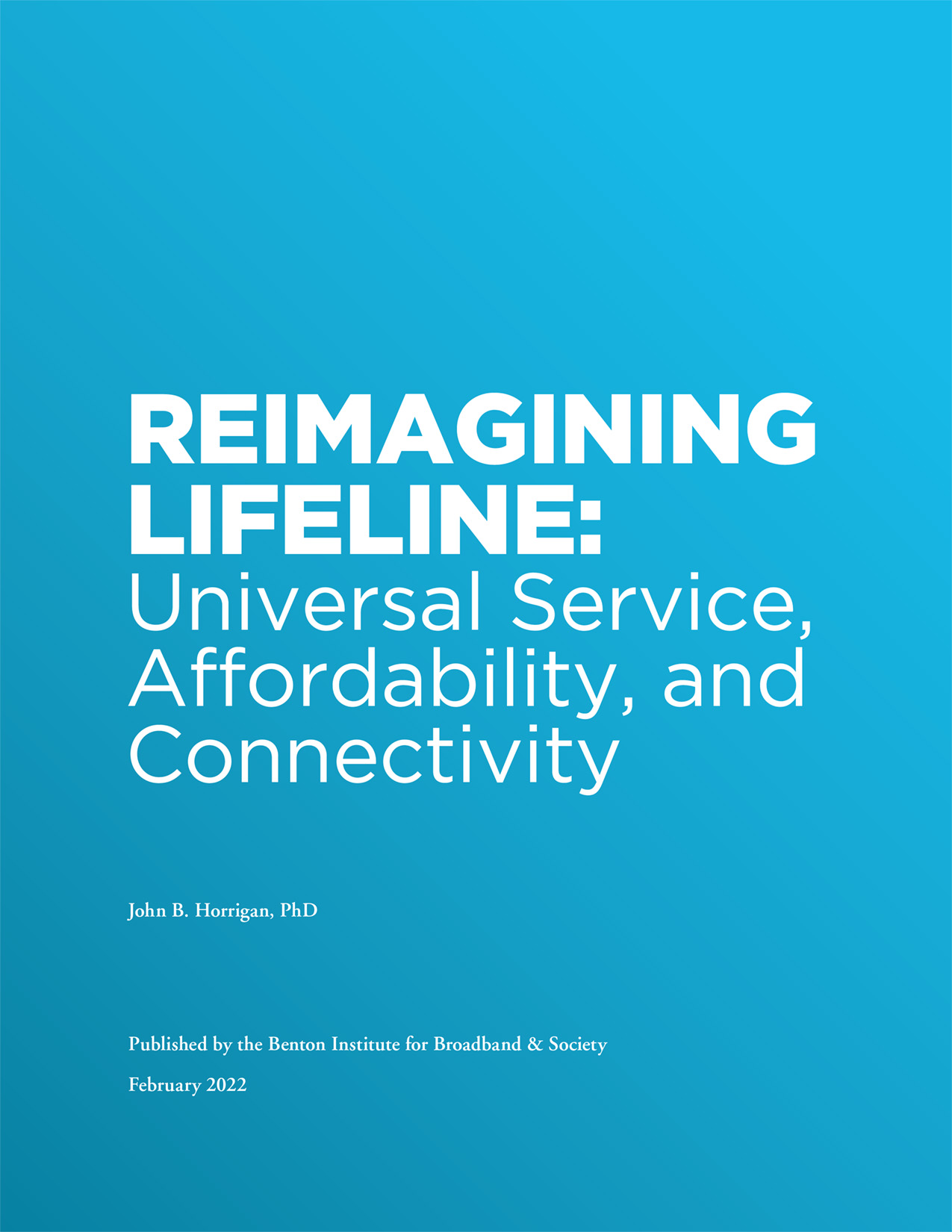John Horrigan
ACP Enrollment Performance Tool: Understanding Factors that Play a Role in ACP Enrollment
Recently we launched the Benton Institute’s Affordable Connectivity Program Enrollment Performance Tool, a free resource that helps communities answer the question: “How are ACP sign-ups going?” Using the tool to search 5-digit zip codes delivers two important numbers: 1) how many households have signed up for ACP and 2) the expected number of households enrolled. Comparing expected enrollment to actual enrollment is a measure of performance.
Let’s close the digital divide once and for all for Black communities
Since digital technologies first emerged about 30 years ago, Black Americans have trailed in terms of access. This “digital divide” is real, it’s important and we can do better. According to our analysis of data from the American Community Survey, 40 percent of Black Americans do not have high-speed, fixed broadband at home, compared to 28 percent of whites.
Closing the digital divide in Black America
The digital divide was first recognized in the mid-1990s. Three decades later, due in part to long-standing economic inequity and the economics of broadband, it remains an impediment to inclusive economic growth, particularly in Black American communities. There are five steps that state and local leaders and broadband stakeholders could take to expand broadband access and promote digital equity and inclusion in Black communities:
American Community Survey data show substantial increases in household wireline broadband adoption

Diving into Digital Equity: Lessons from Focus Groups
Low-income Americans are discerning broadband consumers who are well-attuned to the nuances of service plans, in the midst of dealing with internet service bills that are often a burden on their household budgets. The indispensability of internet access—a need the pandemic has underscored—places service quality next to affordability in the minds of low-income consumers.
What Policymakers Should Know About Lifeline Participants
In July 2021, the Federal Communications Commission's Wireline Competition Bureau released its report on the state of the Lifeline marketplace. The aim of the report was to identify areas for FCC consideration regarding the continued transition of Lifeline from a program that primarily supports voice services to one with a greater focus on supporting broadband Internet access service. Unfortunately, there are three critical questions I noticed the FCC’s Lifeline report did not address:
The Lifeline Market
The goal of universal service is to ensure that essential communications services are available and affordable for all. Equity remains a bedrock principle: the notion that society should take steps to ensure that all (or nearly all) citizens can use communications networks. However, whereas it was once fairly easy to identify the goal—widespread adoption of telephone service—today the situation is not as clear. Should, for instance, “universal service” include internet access? If so, at what level of service?
The Affordable Connectivity Program represents an inflection point for Lifeline and universal service.

Digital Skills and Trust
A deep dive into the role digital skills play in people’s interest in and ability to adopt and engage with the internet. This report reveals how much trust people place in public and private institutions such as schools and community-based nonprofits when it comes to learning about discounted and subsidized internet services. The survey findings, focused on income-insecure households (those making $50,000 or less annually), highlight the importance of digital skills training programs and trusted outreach partners as critical components to effective digital inclusion initiatives.

Philadelphia and the Digital Divide: Substantial Progress Since 2019, but Work Still to be Done
A June-July 2021 survey of 2,500 Philadelphia shows that—in the aftermath of the public, private, and philanthropic sectors coming together—there has been substantial progress in closing digital gaps in the city.

